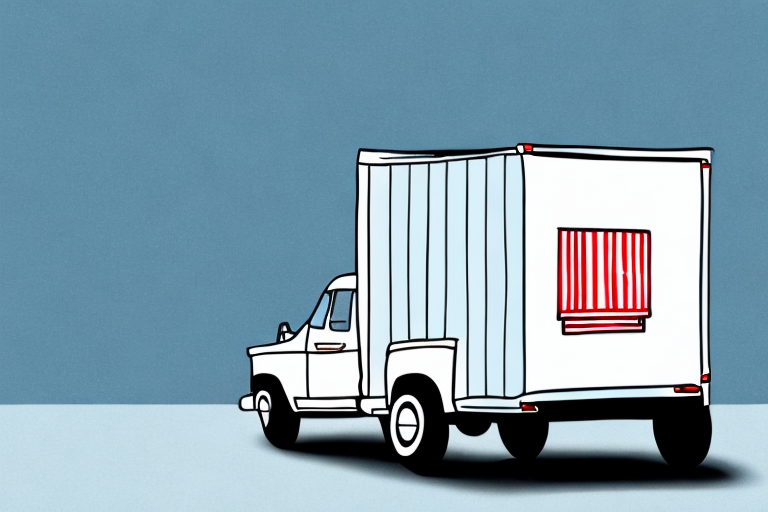What You Need to Know About Tail Gate Exams in the Supply Chain
Ensuring the safety and security of goods in the supply chain is paramount for businesses aiming to maintain operational integrity and customer trust. Tail gate exams are a critical component in this process, serving as a final checkpoint before goods enter the transportation phase. This comprehensive guide delves into the importance of tail gate exams, their various types, preparation strategies, best practices, challenges, technological advancements, benefits, real-life case studies, success metrics, and future trends shaping the landscape of supply chain security.
Why Tail Gate Exams are Important for Supply Chain Management
Tail gate exams are essential in supply chain management as they help detect and prevent security breaches, cargo theft, and the smuggling of contraband goods. According to the U.S. Department of Transportation, cargo theft costs the industry billions annually, highlighting the necessity of rigorous inspection processes. These exams ensure regulatory compliance and minimize risks associated with product contamination or damage, which can lead to significant financial losses and tarnish a company's reputation.
Moreover, tail gate exams enhance overall supply chain efficiency. By identifying issues such as incorrect labeling or packaging early, supply chain managers can implement corrective measures before shipment, reducing the likelihood of delays or disruptions. This proactive approach not only results in cost savings but also improves customer satisfaction by ensuring timely and accurate deliveries. Additionally, the data gleaned from tail gate exams provides valuable insights into supply chain operations, enabling managers to optimize processes and identify areas for continuous improvement.
The Basics of Tail Gate Exams: Definition and Purpose
A tail gate exam is a thorough inspection conducted at the loading dock or gate of a facility before goods are transported. The primary purpose is to ensure that the goods are safe, secure, and compliant with regulatory standards. Tail gate exams typically involve trained personnel using a detailed checklist to inspect various aspects of the shipment, including packaging integrity, seals, labeling accuracy, markings, and accompanying documentation.
Beyond security, tail gate exams are pivotal for maintaining supply chain efficiency. By detecting discrepancies or issues early, these exams prevent potential delays and disruptions in transportation. Furthermore, consistent implementation of tail gate exams fosters trust and collaboration between shippers and carriers, underscoring a commitment to quality control and compliance.
Types of Tail Gate Exams: Pros and Cons
Tail gate exams can be categorized into several types, each with its own advantages and limitations:
- Visual Inspections: Cost-effective and easy to implement, visual inspections involve a manual check of the shipment's exterior. However, they may miss concealed contraband or internal issues.
- X-ray Scans: Offering higher accuracy, X-ray scans can detect hidden items within shipments. The downside is the higher cost and possible unsuitability for radiation-sensitive goods.
- Canine Inspections: Highly effective in identifying contraband, canine inspections require trained dogs and handlers, making them more expensive. Additionally, certain regions may restrict their use.
Choosing the right type of tail gate exam depends on factors such as the nature of the goods, risk level, and budget constraints. A combination of methods often provides the most comprehensive security coverage.
How to Prepare for a Tail Gate Exam in the Supply Chain
Effective preparation is crucial for the success of a tail gate exam. Key steps include:
- Understanding Regulatory Requirements: Familiarize yourself with industry regulations and standards to ensure compliance.
- Creating a Comprehensive Checklist: Develop a detailed list of items to inspect, covering aspects like packaging, seals, labeling, and documentation.
- Training Personnel: Ensure that staff conducting the exams are well-trained and knowledgeable about the inspection protocols.
- Setting Up a Secure Inspection Area: Designate a controlled environment for conducting examinations to prevent unauthorized access and ensure accuracy.
- Communicating with Stakeholders: Inform suppliers and carriers about the exam requirements and expectations to foster cooperation.
Additionally, conducting a thorough risk assessment helps identify potential hazards such as adverse weather conditions, equipment malfunctions, or security threats. Developing contingency plans based on this assessment ensures preparedness for unforeseen challenges.
Conducting a Successful Tail Gate Exam: Best Practices and Tips
Implementing best practices can significantly enhance the effectiveness of tail gate exams:
- Adopt a Systematic Approach: Follow a consistent inspection methodology to ensure thoroughness and reliability.
- Utilize Advanced Technology: Incorporate tools like X-ray scanners and automated tracking systems to improve accuracy and efficiency.
- Maintain a Secure Environment: Control access to the inspection area to prevent tampering and ensure the integrity of the examination.
- Effective Communication: Keep all stakeholders informed throughout the process to facilitate smooth operations.
- Regular Audits: Conduct periodic reviews to ensure compliance and identify areas for improvement.
Establishing clear policies and procedures is also essential. These should outline the purpose of tail gate exams, define roles and responsibilities, specify prohibited items, and detail consequences for non-compliance. Continuous training and education for personnel ensure they remain updated on the latest inspection techniques and technological advancements.
Common Challenges Faced During a Tail Gate Exam and How to Overcome Them
Tail gate exams can encounter several challenges, including:
- Resistance from Carriers and Suppliers: Address by fostering collaborative relationships and emphasizing the importance of security.
- Language Barriers: Utilize translators or multilingual personnel to ensure clear communication.
- Lack of Technology or Equipment: Invest in necessary tools and technologies to enhance the inspection process.
- Time Constraints: Allocate sufficient time and resources to conduct thorough inspections without causing delays.
Another significant challenge is the lack of standardization across the industry. Different carriers and suppliers may have varying expectations and requirements, leading to inconsistencies. Collaborating with industry associations and regulatory bodies to establish common standards can mitigate this issue.
Cultural differences may also impact the effectiveness of tail gate exams. Building strong, culturally sensitive relationships with all stakeholders and communicating the significance of compliance and safety can help overcome these barriers.
The Role of Technology in Streamlining Tail Gate Exams in the Supply Chain
Technology plays a pivotal role in enhancing the efficiency and effectiveness of tail gate exams. Advanced tools such as X-ray scanners, automated tracking systems, and blockchain technology facilitate accurate and swift inspections. According to a report by McKinsey & Company, integrating technology can reduce inspection time by up to 30%, significantly improving operational efficiency.
Electronic documentation and tracking systems minimize paperwork, reduce human error, and ensure real-time data access. Automated systems enhance accuracy in identifying hidden items, while surveillance technologies bolster security measures by monitoring goods movement and detecting suspicious activities.
Implementing these technologies not only streamlines the inspection process but also enhances data security and operational transparency, providing supply chain managers with actionable insights to further optimize their processes.
Key Benefits of Implementing Tail Gate Exams in Your Supply Chain Processes
Integrating tail gate exams into supply chain processes offers numerous benefits:
- Enhanced Security: Protects against theft, smuggling, and unauthorized access to goods.
- Improved Compliance: Ensures adherence to regulatory standards, reducing the risk of legal penalties.
- Reduced Risk of Contamination and Damage: Prevents product spoilage and maintains quality standards.
- Better Communication and Collaboration: Strengthens relationships with carriers and suppliers through shared security protocols.
- Increased Customer Satisfaction: Reliable and secure transportation processes lead to timely deliveries and higher customer trust.
Additionally, tail gate exams help identify potential issues early, allowing for timely corrective actions that prevent costly delays and disruptions. By optimizing supply chain efficiency, businesses can achieve significant cost savings and enhance their competitive edge in the market.
Case Studies: Real-Life Examples of Successful Implementation of Tail Gate Exams in the Supply Chain
Examining real-life case studies highlights the tangible benefits of tail gate exams:
- Global Logistics Firm: Implemented a comprehensive tail gate exam program incorporating X-ray scans and canine inspections. This initiative resulted in a 40% reduction in cargo theft and a 25% decrease in contraband smuggling within the first year.
- Retail Giant: Partnered with carriers and suppliers to standardize tail gate exam procedures. Enhanced communication and collaboration led to a more streamlined supply chain, reducing shipment delays by 15% and improving overall customer satisfaction ratings.
- Pharmaceutical Company: Utilized blockchain technology for secure documentation and tracking during tail gate exams. This approach ensured complete traceability of goods, increasing regulatory compliance and reducing instances of product tampering.
These case studies demonstrate the effectiveness of tailored tail gate exam programs in enhancing security, compliance, and operational efficiency across various industries.
How to Measure the Success of Your Tail Gate Exam Program
Evaluating the success of a tail gate exam program is essential for continuous improvement. Key metrics to consider include:
- Number of Security Breaches Prevented: Tracks the effectiveness of exams in mitigating theft and smuggling.
- Compliance Rate: Measures adherence to regulatory requirements and internal standards.
- Customer Satisfaction: Assesses the impact of secure and timely deliveries on customer perceptions.
- Return on Investment (ROI): Evaluates the financial benefits relative to the costs of implementing the exam program.
Regular audits and stakeholder feedback are also crucial in identifying strengths and areas for improvement. By analyzing these metrics, organizations can refine their tail gate exam strategies to achieve optimal results.
Future Trends and Innovations in Tail Gate Exams for the Supply Chain Industry
The evolution of the supply chain industry continues to drive innovations in tail gate exams. Emerging trends include:
- Artificial Intelligence and Machine Learning: AI-driven systems can analyze vast amounts of data to predict and identify security threats more accurately.
- Blockchain Technology: Enhances the security and transparency of documentation, ensuring tamper-proof records of inspections.
- IoT Integration: Internet of Things (IoT) devices provide real-time monitoring and tracking of shipments, improving visibility and responsiveness.
- Enhanced Data Sharing and Collaboration: Increased collaboration among stakeholders through shared data platforms fosters a more coordinated approach to supply chain security.
Staying abreast of these trends and investing in cutting-edge technologies will enable supply chain managers to enhance the effectiveness of tail gate exams, ensuring robust security and efficiency in an increasingly complex global marketplace.
Conclusion
Tail gate exams are a vital element in securing the supply chain, offering significant benefits in terms of security, compliance, and operational efficiency. By adopting best practices, leveraging advanced technologies, and staying informed about industry trends, businesses can effectively safeguard their goods, enhance customer satisfaction, and maintain a competitive edge. Continuous evaluation and adaptation of tail gate exam programs will ensure they remain effective in addressing evolving challenges and emerging threats in the supply chain landscape.






















